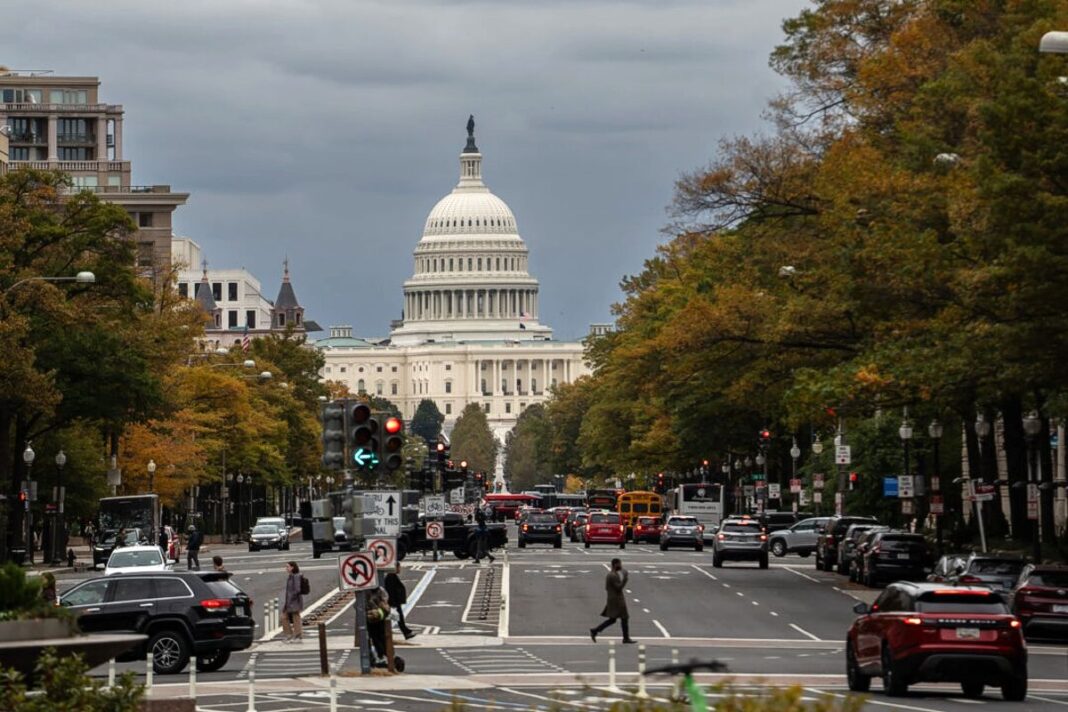Flight reductions at 40 airports will remain at 6 percent, the FAA said.
The Federal Aviation Administration (FAA) continues to cut flights even as the government shutdown comes to an end.
More than 9,000 flights have been canceled across the United States since the FAA ordered flight cuts last week to match the dwindling staffing of air traffic controllers due to the government shutdown.
Control towers have been short-staffed since the start of the shutdown, but cancellations won’t stop immediately, even when the government reopens.
Here’s what we know about the future of air travel over the coming weeks.
Vague Timeline for Restoration
The FAA, led by Transportation Secretary Sean Duffy, has said that the easing of flight restrictions will be decided by real-time information with safety as the top priority.
According to Duffy’s remarks sent to The Epoch Times in an emailed statement, the administration will continue to reduce flight volumes until “the metrics start to move in the right direction.”
“We’re going to use data; the data will dictate what we do. If the data goes in the wrong direction, could you see additional restrictions? Yes. If the data goes in the right direction, we will roll this back. It’s going to be data-driven, safety-driven.”
The agency said that the specific items it is observing to guide decision-making include reports from pilots on controller responsiveness and apparent stress levels, as well as data surrounding ground incidents.
Around 1,900 domestic flights were canceled on Nov. 11, but as of late afternoon on Nov. 12, that figure was only around 1,300.
Why the Reductions Were Made
The FAA made the decision last week to reduce domestic flights in an effort to lighten the load on already strained controllers and promote air travel safety.
The additional stress on controllers during the shutdown is believed to have driven concern about the safety of continuing flights at the previous levels, according to the FAA, prompting action to decrease domestic travel.
“We looked at data that showed trend lines going in the wrong direction,” Duffy said during a Nov. 11 press briefing. “The primary concern is safety. And when we saw the trend lines going in the wrong direction … we started to implement a plan to reduce flights by 10 percent.”
The reduction in flights started from 4 percent on Saturday, Nov. 8, and was increased by 2 percent to 6 percent as of Nov. 11. The reductions were set to increase to 10 percent in the near future if the shutdown continued.
The Transportation Department and the FAA said on Nov. 12 that flight reductions would remain at 6 percent moving forward, instead of rising to 10 percent by Friday. The agencies said the FAA’s safety team made the recommendation after a “rapid decline” in air traffic controller callouts.
The 6 percent flight reductions will continue until data determines the air traffic system can safely return to normalcy, the agencies said.
FAA Administrator Bryan Bedford said at a news conference on Nov. 5 that he was “not aware in my 35-year history in the aviation market, where we’ve had a situation where we’re taking these kinds of measures. We’re in a new territory in terms of government shutdowns.”







